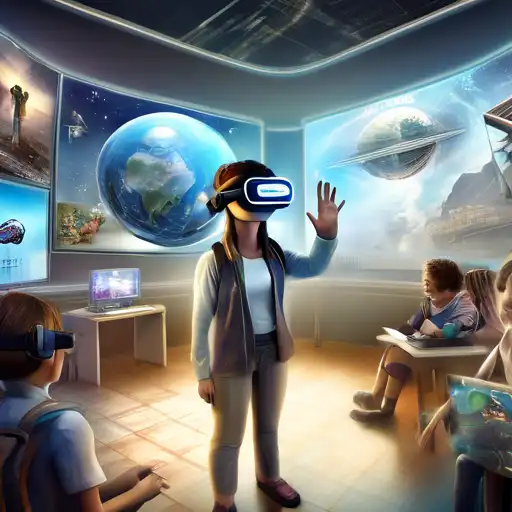Introduction to Virtual Reality in Education
Virtual Reality (VR) is rapidly transforming the educational landscape, offering immersive learning experiences that were once beyond imagination. This technology enables students to explore virtual environments, making learning more interactive and engaging. As we delve into the potential of VR in education, it's clear that this technology is setting the stage for a revolutionary shift in how knowledge is imparted and absorbed.
The Benefits of Virtual Reality for Students
VR in education brings a plethora of benefits, including enhanced engagement, improved retention rates, and the ability to simulate real-world scenarios. Students can embark on virtual field trips, conduct complex scientific experiments, and practice skills in a safe, controlled environment. This hands-on approach not only makes learning more enjoyable but also significantly boosts comprehension and memory retention.
Enhanced Engagement Through Immersion
One of the standout features of VR is its ability to fully immerse users in a virtual world. This level of engagement is unparalleled, capturing students' attention in ways traditional methods cannot. By leveraging VR, educators can create captivating lessons that stimulate curiosity and foster a deeper understanding of the subject matter.
Safe Learning Environments
VR provides a safe space for students to experiment and learn from their mistakes without real-world consequences. Whether it's performing a delicate surgical procedure or navigating a historical battlefield, VR allows learners to gain valuable experience and confidence in a risk-free setting.
Implementing VR in the Classroom
Integrating VR into educational curricula requires careful planning and consideration. Schools and institutions must invest in the necessary hardware and software, as well as train educators to effectively utilize this technology. Despite these challenges, the potential rewards make VR an invaluable tool for modern education.
Choosing the Right VR Content
Selecting appropriate VR content is crucial to achieving educational objectives. Content should be aligned with curriculum standards and designed to meet specific learning outcomes. With a wide range of VR applications available, educators have the opportunity to tailor experiences to their students' needs and interests.
Overcoming Barriers to Adoption
While the benefits of VR in education are clear, there are obstacles to widespread adoption, including cost and accessibility. However, as technology advances and becomes more affordable, these barriers are gradually being overcome, paving the way for VR to become a staple in classrooms worldwide.
The Future of VR in Education
The future of VR in education is bright, with ongoing advancements promising even more innovative and effective learning tools. As VR technology continues to evolve, it will further enhance the educational experience, making learning more accessible, engaging, and effective for students everywhere.
For more insights into the latest trends in education technology, explore our education technology section.
Conclusion
Virtual Reality is redefining the boundaries of education, offering unprecedented opportunities for immersive learning. By embracing VR, educators can provide students with dynamic and interactive experiences that prepare them for the challenges of the future. As we continue to explore the potential of this technology, it's clear that VR is not just the next frontier in education—it's the new standard.
